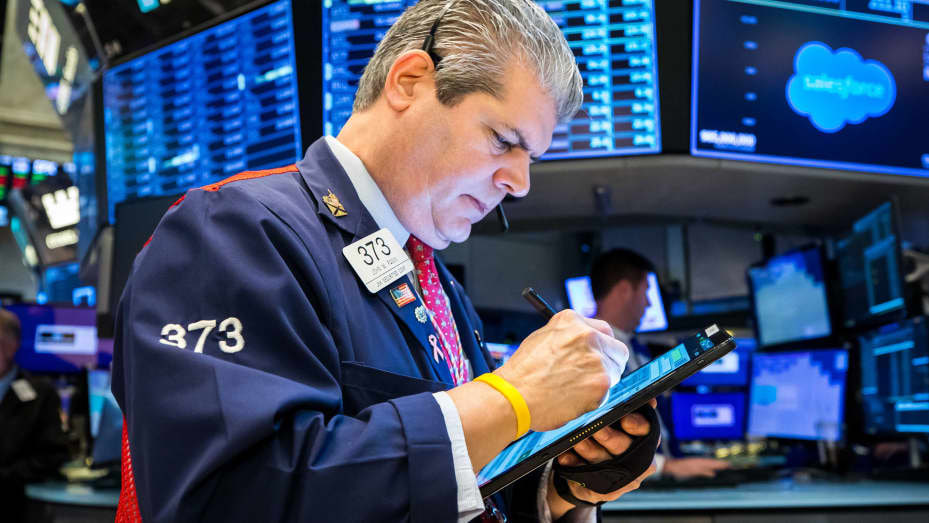Riding the Bull: Why the S&P 500 Could Soar to 6400 by 2025 – A Deep Dive
Meta Description: S&P 500 forecast, Wells Fargo prediction, stock market outlook 2025, investment strategy, market analysis, bull market, financial planning.
This isn't just another market prediction; it's a detailed exploration of Wells Fargo's bold forecast for the S&P 500, projecting a potential surge to 6200-6400 by the end of 2025. Forget the usual dry market reports – we're diving deep into the why, examining the underlying factors fueling this optimistic outlook. We'll unpack the economic indicators, geopolitical landscapes, and corporate performance projections that form the bedrock of this prediction. This isn't about blind faith; it's about understanding the intricate mechanisms driving market movements and assessing the potential risks and rewards. We'll also provide actionable insights, helping you navigate this exciting, albeit volatile, market environment. Think of this as your comprehensive guide, blending expert analysis with practical advice, ensuring you're well-equipped to make informed investment decisions. Prepare to challenge your assumptions, expand your financial knowledge, and potentially unlock significant opportunities in the coming years. Are you ready to ride the bull?
S&P 500 Forecast: Wells Fargo's Bullish Prediction
Wells Fargo's recent upward revision of their S&P 500 target range to 6200-6400 by 2025 is a significant development, sparking considerable discussion amongst investors. This isn't a knee-jerk reaction; it's based on a careful assessment of various economic and market indicators. But what makes this prediction so compelling, and what factors are driving this bullish sentiment? Let's delve into the details.
Economic Fundamentals: A Foundation for Growth
One of the key pillars supporting this positive outlook is the underlying strength of the US economy. While inflation remains a concern, the resilience of the job market and continued consumer spending suggest a degree of underlying robustness. Factors such as ongoing technological advancements, particularly in AI and renewable energy, are also expected to contribute to sustained economic expansion. Of course, unforeseen circumstances could always impact this trajectory, but current indicators paint a relatively optimistic picture. Moreover, the Federal Reserve's monetary policy, while aimed at curbing inflation, is also carefully calibrated to avoid triggering a recession. This delicate balancing act is crucial, and Wells Fargo's projection seemingly reflects confidence in the Fed's ability to navigate this complex landscape successfully. It's a delicate dance, though, and the possibility of a hard landing still looms.
Corporate Earnings: The Engine of Market Growth
The projected growth in the S&P 500 isn't solely reliant on macroeconomic factors; it's also hinged on strong corporate earnings. Many key sectors are poised for significant growth, particularly in technology, healthcare, and consumer staples. The continued adoption of innovative technologies, coupled with robust demand in these sectors, suggests that corporate profits are likely to remain healthy, driving further market appreciation. However, it's crucial to acknowledge the potential headwinds. Supply chain disruptions, escalating geopolitical tensions, and rising interest rates could all exert downward pressure on corporate earnings. The interplay of these factors will be critical in determining the actual trajectory of the market. Think of it as a complex equation, with multiple variables constantly interacting.
Geopolitical Landscape: Navigating the Uncertainties
The geopolitical landscape, always a source of uncertainty, also plays a role in this prediction. While global tensions remain, the overall stability of major economies suggests that these risks are likely to be manageable. However, unforeseen events, such as escalating conflicts or significant trade disruptions, could dramatically alter this outlook. Therefore, a robust risk management strategy is crucial for investors navigating this environment. Diversification remains key to mitigating potential losses arising from unpredictable geopolitical developments. It's important to understand that these are not static elements; they are constantly shifting, creating a dynamic and complex environment for investors.
Potential Risks and Challenges
While the overall outlook is positive, it's crucial to acknowledge potential risks. Inflation, though seemingly under control, could re-emerge as a significant threat, potentially forcing the Federal Reserve to adopt more aggressive monetary tightening measures. This could trigger a recession, dampening corporate earnings and leading to a market correction. Furthermore, geopolitical instability remains a persistent concern, with the potential to disrupt global supply chains and negatively impact market sentiment. It's not all sunshine and rainbows; unforeseen events could easily throw a wrench in the works.
Investment Strategy: Navigating the Market
Given Wells Fargo's prediction, what should investors do? A diversified portfolio, spread across different asset classes and sectors, is essential. It's not about putting all your eggs in one basket. Consider incorporating both growth and value stocks, along with alternative investments such as real estate or bonds, to balance risk and reward. This isn't financial advice, but a suggestion to consider consulting with a financial advisor to develop a personalized strategy tailored to your risk tolerance and financial goals.
Understanding the S&P 500
The S&P 500 is a stock market index tracking the performance of 500 large-cap US companies. It's a widely followed benchmark, providing a broad overview of the US equity market. Its performance reflects the overall health of the American economy and is a crucial indicator for investors worldwide. It's important to understand its composition and the factors affecting its performance to make well-informed investment decisions.
Frequently Asked Questions (FAQs)
Q1: Is Wells Fargo's prediction guaranteed?
A1: Absolutely not! Market predictions are inherently uncertain, and this is just a forecast based on current economic and market conditions. Various unforeseen events could alter the trajectory significantly.
Q2: What factors could cause the S&P 500 to fall short of the prediction?
A2: A significant economic downturn, unexpectedly high inflation, major geopolitical events, or a sudden shift in investor sentiment could all negatively impact the market's performance.
Q3: Should I invest heavily in the stock market based on this prediction?
A3: No. Always diversify your investments and consider your risk tolerance before making any major investment decisions. Consult a financial advisor for personalized guidance.
Q4: How reliable are these kinds of long-term market predictions?
A4: Long-term market predictions are inherently less reliable than short-term ones due to the increased influence of unpredictable factors. Treat them as educated guesses, not guarantees.
Q5: What other indicators should I consider besides Wells Fargo's prediction?
A5: Pay attention to economic data (GDP growth, inflation rates, unemployment figures), corporate earnings reports, and geopolitical developments. A holistic view is essential.
Q6: Where can I find more information about the S&P 500?
A6: Reputable financial websites, such as Yahoo Finance, Google Finance, and Bloomberg, provide detailed information on the S&P 500, including historical data, current performance, and analysis.
Conclusion: A Calculated Gamble, Not a Sure Thing
Wells Fargo's prediction represents a cautiously optimistic outlook for the S&P 500. While the underlying fundamentals suggest potential for significant growth, it's essential to approach this forecast with a healthy dose of realism. Unforeseen circumstances could easily derail the projected trajectory. The key takeaway is that informed investment decisions require a thorough understanding of both the potential upside and the inherent risks involved. This detailed analysis should empower you to navigate the market landscape more effectively. Remember, it's always wise to consult with a financial professional for personalized advice tailored to your specific circumstances. Good luck, and happy investing!



